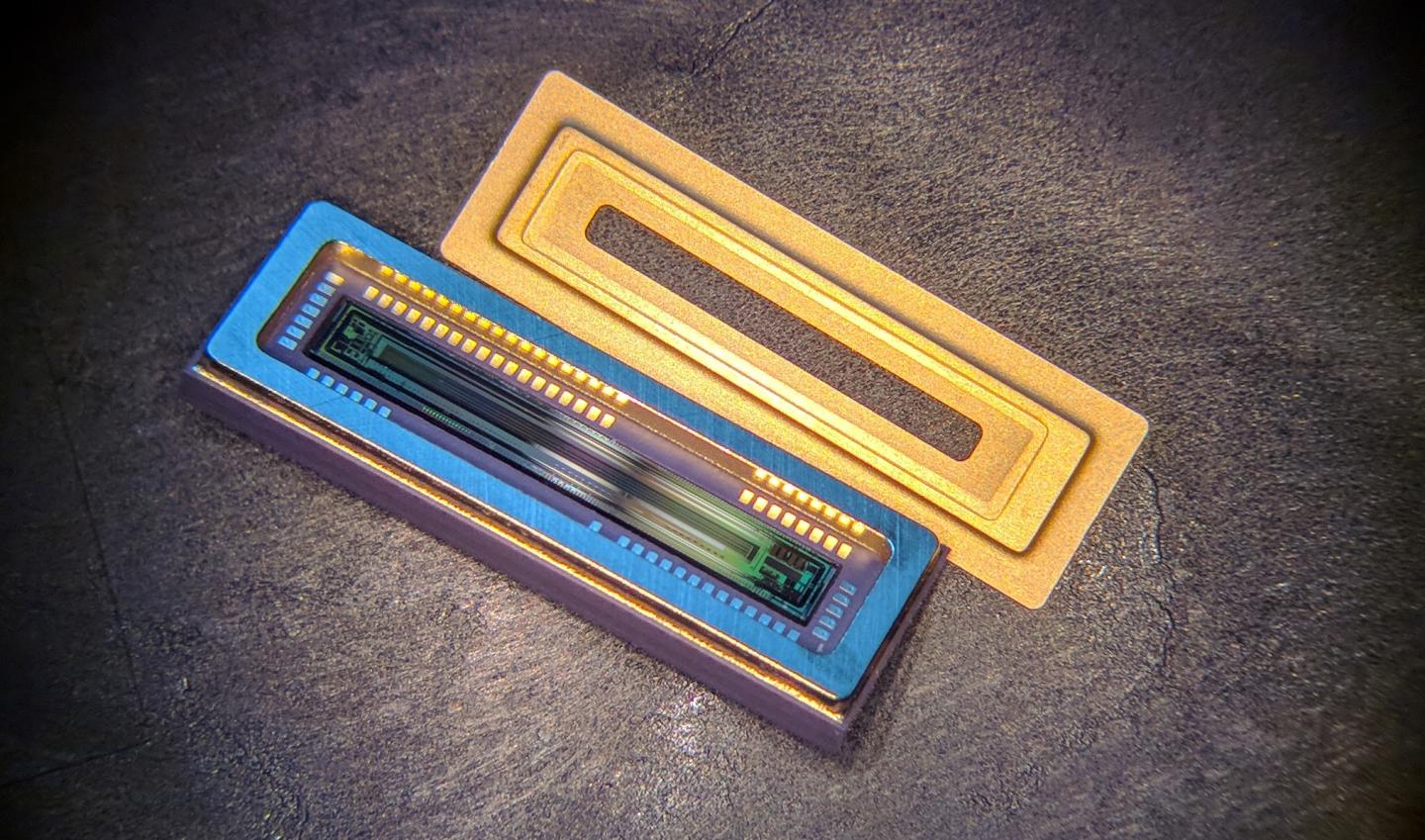
Credit: Emberion / Graphene Flagship
Emberion was one of the first spinouts of the Graphene Flagship. It was founded in 2016 to take work done in the Graphene Flagship Optoelectronics work package to the market. Emberion’s ultra-sensitive photodetectors combine graphene transistors with an efficient light absorbing layer. This combination enables a wide spectral range covered with a single photodetector, from visible (VIS) light to short-wave infrared (SWIR), detecting wavelengths from 400 to 1800nm. Penetrating through material, the SWIR light allows for quick analysis of organic products, such as food and chemical composition.
Complete detection of visible light and short waved infrared range previously required two sensor types; silicon and InGaAs typically. InGaAs sensors however can be expensive for the end customer. The replacement of such material with graphene couples the capabilities of silicon and InGaAs in one graphene-based sensor, allowing for~30% cost reduction.
VIS-SWIR graphene photodetectors are a ready-to-buy product, making previously cost-prohibited in-line and in-field spectroscopy applications feasible. These include food security. plastic sorting in recycling, authentication of pharmaceutical products, agricultural field analysis and non-invasive medical imaging.
“Graphene’s unique properties and its compatibility to combine with other materials allowed us to create this cost-effective array for spectrometers,” explained Tapani Ryhänen, CEO of Emberion. “Providing broad spectrum capabilities, without the expense of traditional InGaAs sensors, the VIS-SWIR graphene photodetector provides a digital output using Emberion’s inhouse designed read out circuits (ROIC) — without the need to translate analogue data with additional components.
“With sensitivity and noise levels comparable to InGaAs detectors, our graphene-based sensors are a more affordable option for businesses who were previously faced with costly products.”
Daniel Neumaier, Leader of the Graphene Flagship Electronics and Photonics Integration Division believes that “the recently launched IR sensor array from Emberion is an excellent example of how knowledge and expertise from different domains is merged in order to commercialize a new technology. The product has benefited not only from the advanced made on the underlying photonic devices, but also from the progress made on material synthesis, process technology, CMOS integration and finally manufacturing. This demonstrates the importance of collaboration and broad scope of the Graphene Flagship project. “
Andrea C. Ferrari, Science and Technology Officer of the Graphene Flagship and Chair of Its Management Panel, added that “[the Graphene Flagship] welcomes the news of another product launch derived from the work funded by our project. This shows how we are progressing from the laboratories to the factory floors along our technology and Innovation roadmap. We can say with confidence that graphene technology is now a reality. Over the next 5 years we expect a number of new products to be launched and many new spin outs formed.”
###
Media Contact
Dr Fernando Gomollon-Bel
[email protected]
Original Source
http://graphene-flagship.



